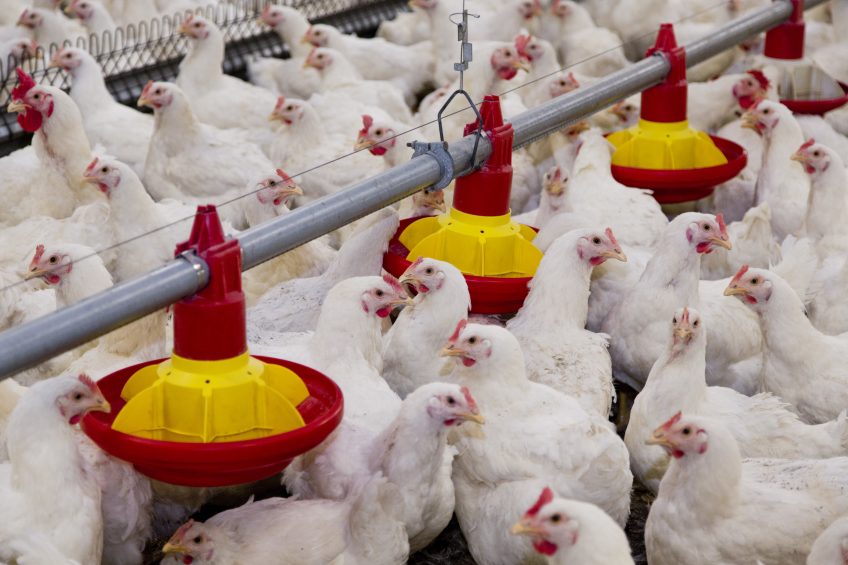Organic acids invaluable tool for poultry gut health

Protected benzoic acid improved growth performance in birds that were subject to Eimeria challenge, according to new research released this week by Novus International.
Frances Yan, senior poultry nutrition research scientist at Novus, told the Poultry Science Association annual meeting, that the efficacy was greater when diet complexity was increased by combining viscous grain and low digestible protein ingredients.
Eimeria is a common gut health obstacle that can lead to major losses in poultry barns due to mortality and the resulting reduced performance.
She said a battery trial was conducted with 384 day-old male broilers to evaluate the effect of protected benzoic acid on growth performance and gut health of broilers subject to Eimeria challenge as affected by diet type.
The study consisted of 6 dietary treatments in a 3×2 factorial arrangement with 3 types of diet (rye 10%, canola meat 7.5% and poultry meal 3%, and their combination) and 2 levels of protected benzoic acid (0 and 500g/ton AVIMATRIX Novus International Inc).
Each diet was fed to 8 replicate pens of 8 birds. All birds were orally gavaged with a coccidiosis vaccine at 10x recommended dose on day 14.
Body weight, feed intake, FCR and mortality were determined on day 7,14, 19 and 26. On day 27, blood samples were collected for serum coloration, IL-10 and IL-4 determination. Data were subject to 2-way ANOVA to evaluate main effects and interaction; means were separated by Fisher’s protected LSDA test.
The results showed that bodyweight was reduced with inclusion of 10% rye on day 7,14 and 19 regardless of canola and poultry meal (CPM) inclusion (P<0.05).>
Body weight increased
Benzoic acid increased body weight on day 7 and 14 regardless of diet type (p<0.05). on day 26, without benzoic acid, birds fed cpm weighed higher than those fed the combination and the rye fed birds weighed in between not significantly different from either; benzoic acid increased 26-d bw of broilers fed the combination by 12% but not in the other two types, accounting for a trend of interaction (p="0.09).">
Up to day 14, FCR was not significantly affected by diet type, but improved by benzoic acid by 17 and 7 points on day 7 and 14 respectively (P<0.05). there was an interaction between diet type and benzoic acid on day 19 (p="0.07)" and 26 (p><0.05) where combining rye and cpm led to higher fcr, which was reversed by benzoic acid supplementation.>
Feed intake was affected by diet type on day 14, 19 and 26 (P<0.05) in which higher bw typically corresponded to higher feed intake, but not significantly affected by benzoic acid (p>0.10).
Serum IL-4 was the highest in birds fed rye, followed by CPM and rye and then by CPM (P<0.05), indicating rye was capable of inducing inflammatory responses.>
Yan said: “Organic acids are an invaluable tool in today’s poultry industry. We’re really only scratching the surface in terms of what they can do for poultry health gut challenges.”












